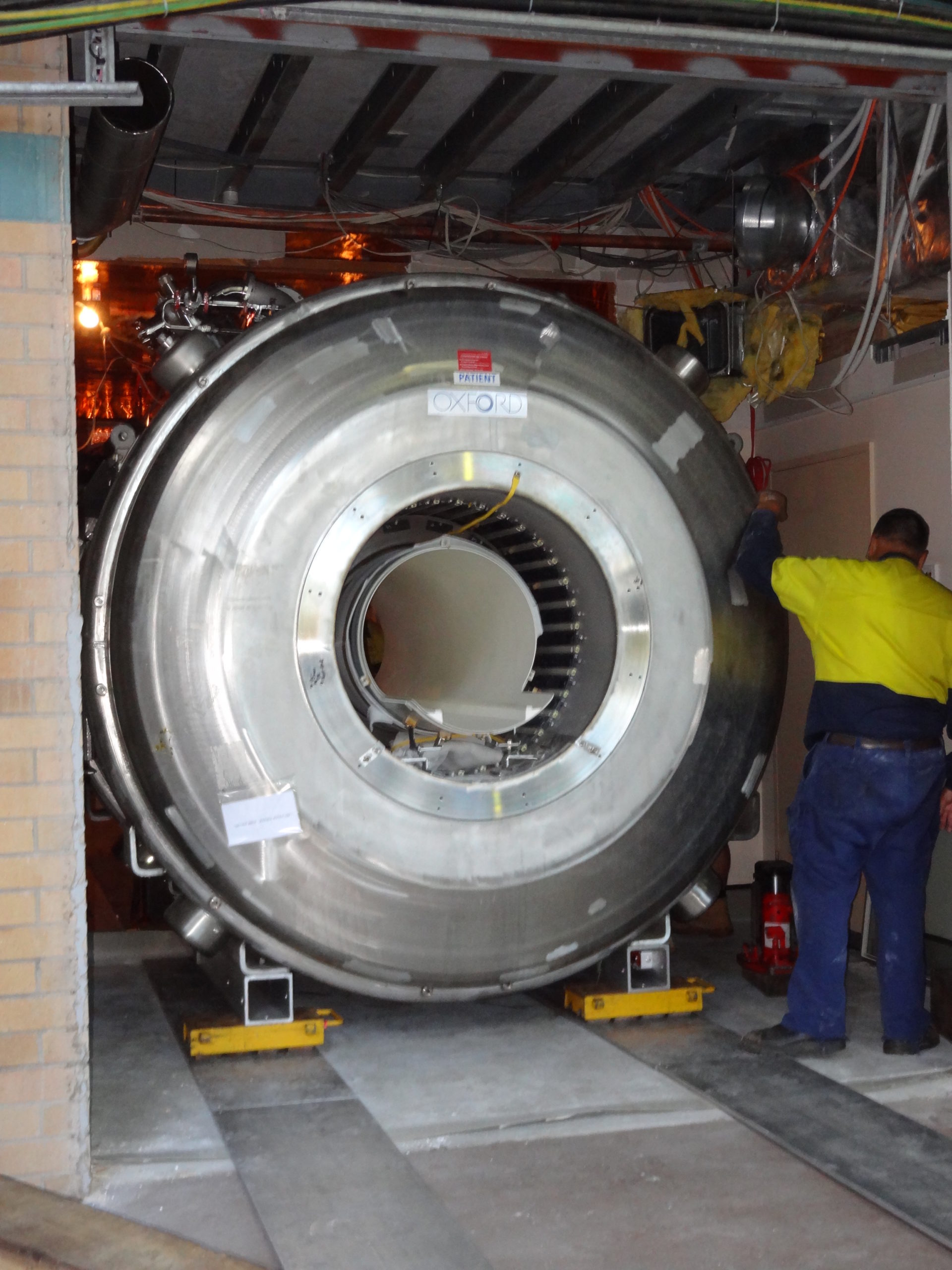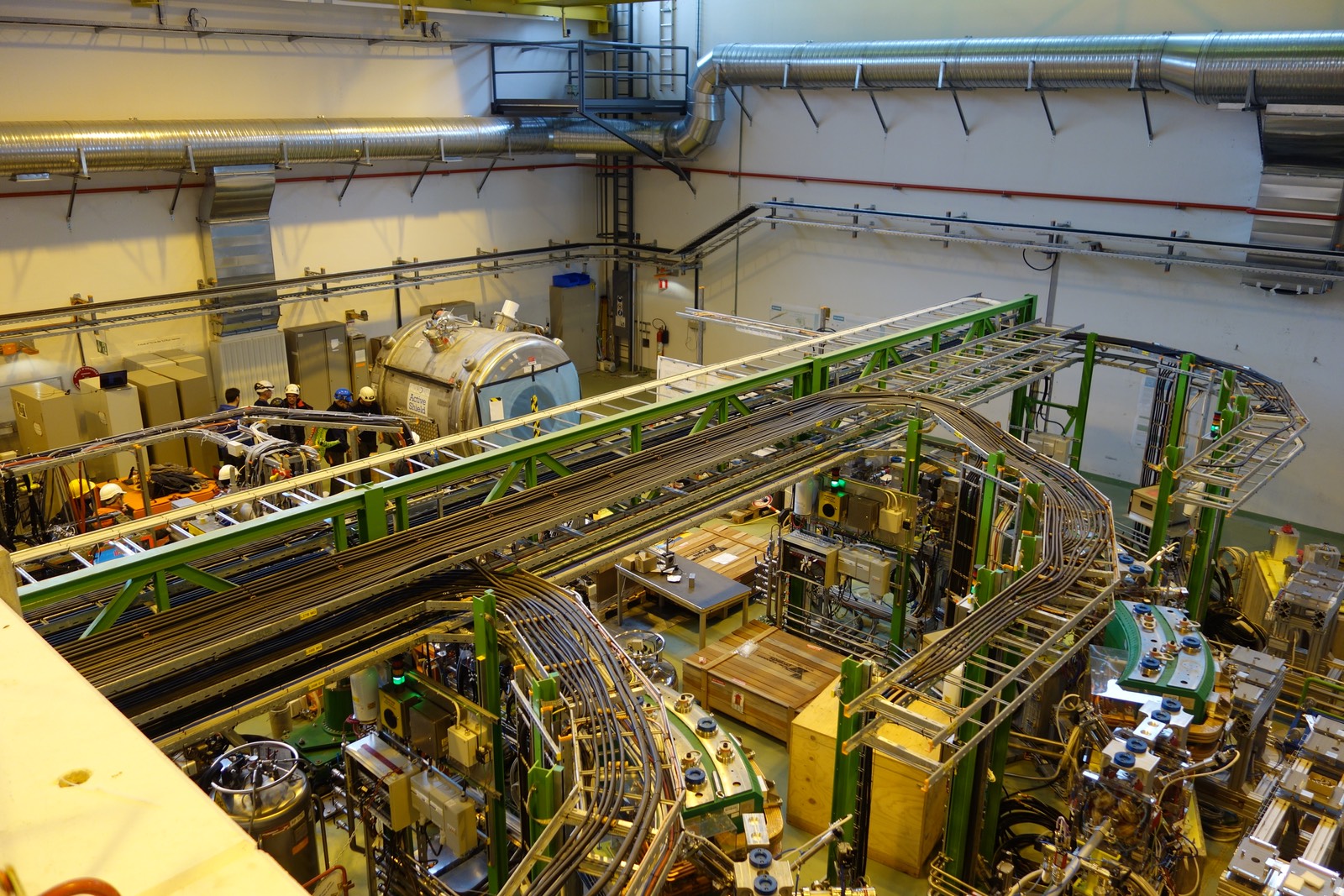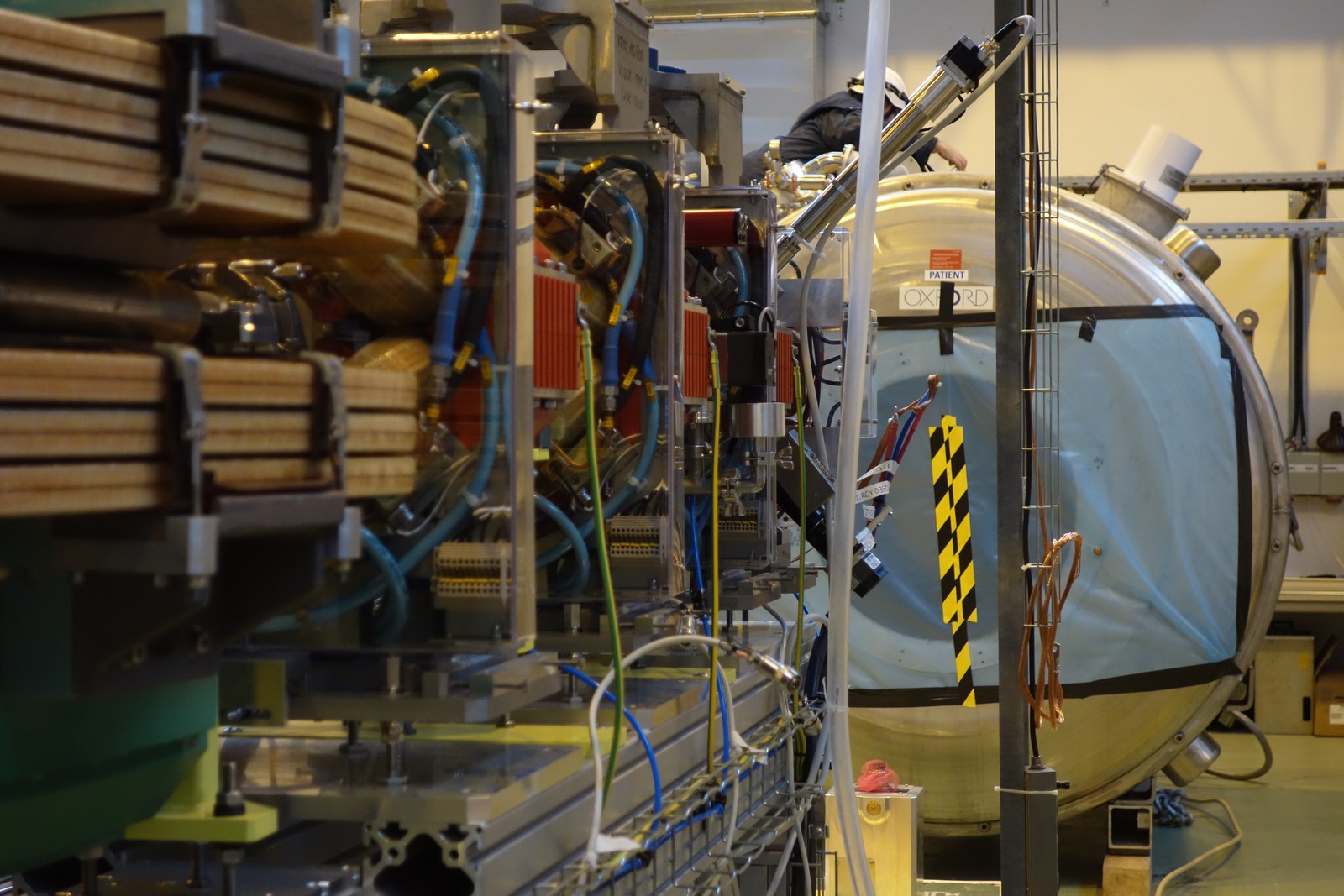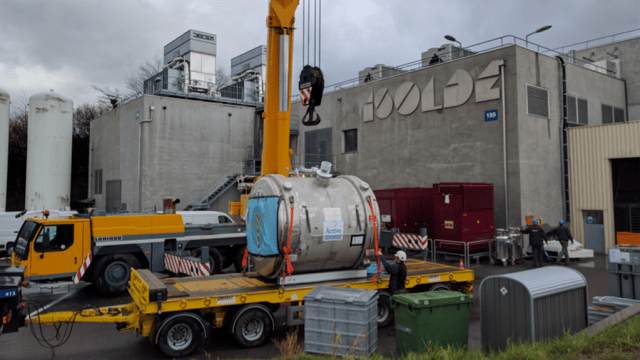An old MRI machine took a several-week boat journey around the world last week. Scientists are going to gut it, replace the bed, and try to understand the secrets of the universe with it — because, why not?
The magnet (Image: Karl Johnston/CERN)
There’s actually a good reason. When some physicists at the CERN experiment ISOLDE realised they’d have to drop around $1.65 million just to build their own magnet, they started to look for alternatives. Luckily, an Brisbane hospital was scrapping their giant magnet, which the ISOLDE folks bought for a measly $211,450. Physicists hope to use the magnet to understand the nature of nuclei — the crunchy centres of every atom — and even the nuclear reactions happening inside supernovae.

CERN is more than just the famous Large Hadron Collider in Geneva, Switzerland. It has around two dozen experiments and facilities exploring the nature of matter, all the way down to how neutrons and protons arrange in atomic nuclei.
If you remember back to high school chemistry, electrons arrange themselves inside specific shells around atoms. Protons and neutrons arrange themselves similarly — but we’re still learning how. “We want to study that shell structure,” Liam Gaffney, a research fellow at CERN, told Gizmodo. He said that the nucleus is much more difficult to understand because the strong nuclear force is holding it together, while the repulsive electromagnetic force between positively-charged protons is trying to push it apart.
“There’s no real true understanding of the strong force in nuclei,” said Gaffney. “We can’t find a theory like the Standard Model,” the theory of individual particles. “We can’t describe many isotopes we observe today,” the flavours that different atoms of elements might come in, with isotopes differing only in the number of neutrons in their nuclei.
The new magnet, which was purchased by CERN’s Isotope mass Separator On-Line facility, or ISOLDE, will help shed light on these atomic mysteries, and on the rates of nuclear reactions during supernovae. ISOLDE is a smaller experiment that harnesses a beam of protons from a small nearby proton accelerator, the first in a slew of accelerators that eventually injects particles into the Large Hadron Collider. ISOLDE, in fact, takes 40 per cent of the protons that CERN produces for its experiments.
Those protons slam into a (usually) uranium target, splitting uranium atoms into low-energy beams of different radioactive elements. The ISOLDE experiment then directs these elements into individual experimental halls that scientists can use to do whatever they might need to do with a strange beam of radioactive ions.

Image: Liam Gaffney/CERN
ISOLDE recently received an upgrade to accelerate some of the heavy ion beams called HIE-ISOLDE (High Intensity and Energy ISOLDE) produced from splitting the initial uranium source. These radioactive beams hit targets and interact, resulting in high-energy cannons of heavy radioactive elements. Those are sent down the next pipe aimed at a target made from much smaller deuterium atoms, which are just single protons mixed with single neutrons. “When you have a heavy ion coming in… it’s like throwing a basketball at a ping pong ball,” Gaffney said.
That’s where the silly MRI magnet comes in. Yes, it’s literally a cylindrical MRI machine like the ones you see at the hospital, shipped on a boat all the way over from Australia, turned into a vacuum chamber with the particle beams replacing the bed.
Instead of a splash of difficult-to-decode particles, the magnetic field inside the MRI machine bends some of the protons and causes them to spiral. When these protons hit silicon detectors, the scientists can gather information about the structure of the atomic nuclei themselves.
This isn’t the first time that a high energy physics experiment has used an MRI machine. The ISOLDE team got the idea from Argonne National Laboratory in the United States, which first used an MRI magnet in their own Helical Orbit Spectrometer, or HELIOS, that surrounds a source of stable, not radioactive beams. ISOLDE’s focus is predominantly a radioactive beam.

Image: Liam Gaffney/CERN
The magnet arrived a few weeks ago and is currently sitting at liquid helium temperatures and being tested. The magnet works, at least. Experiments should be up and running next year, said Gaffney. “It’s still wrapped up almost like a little baby.”
[CERN]
